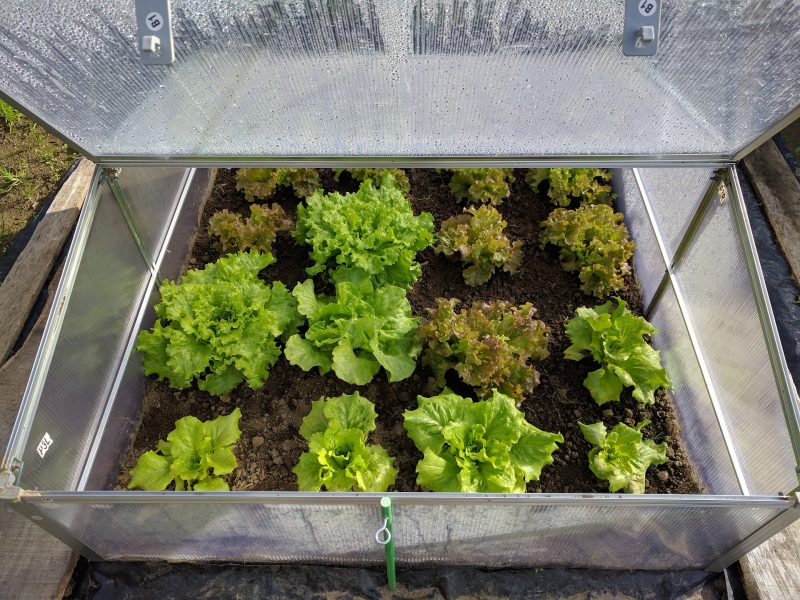Tired of figuring out how to cool a small greenhouse when the temperature rises? The primary purpose of having a greenhouse is to protect crops from extreme heat and cold, as well as unwanted pests. However, as the days become hotter outside, the temperature inside your greenhouse could increase, too.
When left uncontrolled, this could lead to a low-quality crop and increases your plants’ susceptibility to insects and pests. It’s essential to make sure that the temperature inside your greenhouse remains stable. While some crops may survive the hot environment, others will surely wilt.

Read on to learn more about how you can cool your greenhouse.
What Are Some Ways to Cool Your Greenhouse?
Naturally, the amount of cooling you need would depend on where you live. If you live in a place where it especially gets hot in the summer, then you need a robust system that will help lower the temperature in your greenhouse. But if you live in a place where the climate is colder, then you might do away with a simple ventilation system.
Passive Ventilation
Passive or natural ventilation is one of the most popular methods used in cool greenhouses. This is mainly because of the fact that it’s a low-cost method of cooling greenhouses.
You don’t have to use expensive equipment to get the air inside the greenhouse and maintain its temperature at desirable levels. All you need is a vent to draw the air in and out to keep the coolness of the environment inside.
Natural ventilation relies mostly on the wind pressure to push air in and out of the greenhouse. Essentially, the cooler air goes in through the vents and replaces the hot air.
The hot air, in turn, is pushed out of the greenhouse through another vent. This effectively lowers the temperature inside the greenhouse by a few degrees.
People commonly use two types of passive ventilation: roof and side-wall ventilation. According to experts, roof ventilation is five times more effective than side-wall ventilation. But both types can be used in one greenhouse to maximize the cooling effect.
Active Ventilation
Active ventilation is more expensive than passive or natural ventilation. It uses fans to facilitate cooling inside the greenhouse. They can either be structured so the air will circulate inside the greenhouse, or they can be installed so they can suck cold air in and push hot air to the outside.
For maximum effect, the air should be pulled through the full length of the greenhouse to avoid leaving hot air packets. To ensure just that, it’s recommended to place the fans on a higher surface of the greenhouse.
This is a more effective method than placing the fans on the lower part. Ideally, in places where the temperatures are hotter in the summer, the fans should be placed at least 10 feet up the greenhouse.
Active ventilation is essential when natural ventilation can no longer control the heat inside the greenhouse. However, it’s also important to remember that active ventilation can require higher overhead and maintenance costs. Be sure to consider these before installing active ventilation in your greenhouse.
Evaporative Cooling
Another method for cooling greenhouses is evaporative cooling. This is more complex compared to other methods of cooling small greenhouses.
Being that, it will also require more utility and maintenance costs. In this greenhouse cooling method, the heat in the air is used to evaporate the water in plants and other wet surfaces.
The most common type of evaporative method used is the fan and pad method. Here, the system uses a pump that soaks the cellulose pad with water. The fans situated on the opposite side of the cellulose pads pulls the air inside through wet cellulose pads, thus, cooling the environment inside the greenhouse. This lowers the greenhouse’s temperature by at least 10ºF to 20ºF.
The efficiency of the evaporative cooling method primarily depends on the area where you’re currently situated. However, this type of process works best in areas where the climate is drier and more humid. Evaporative cooling can also be used in addition to natural ventilation.
What Temperature is Considered Too Hot for Greenhouses?
Ideally, your greenhouse should have an internal temperature of 80 to 85 degrees Fahrenheit. But you should also take the types of plants you’re growing into consideration.
In general, anything above 90 degrees Fahrenheit is considered too hot and can be damaging to your crops. Even though plants, like tomatoes, won’t survive in such an environment.
Where Should You Set Up a Greenhouse?
If you live somewhere in North America, the best orientation for a greenhouse is south or southeast to allow your plants to get as much early morning sun as they can. You can also choose to go for the east-facing orientation, especially when a southern exposure causes some glazing to take place.
Can I Put a Greenhouse in the Shade?
Your greenhouse’s ideal site should be one that gets full sun. It would be much easier for you to find ways to provide shade for your greenhouse rather than to offer it with solar-intensity light. However, this doesn’t necessarily mean that a shady site for your greenhouse won’t work.
Learn How to Cool a Small Greenhouse and Enjoy Greater Yields
Now that you know a little bit more about how to cool a small greenhouse, you can expect to enjoy better yield and excellent quality crops. If your plants show any signs of heat stress such as wilting, scorched leaves, or drying foliage, reassess your greenhouse’s cooling system as it might not be working anymore, or some parts are damaged. Keep these greenhouse cooling tips in mind to prevent any damages in your plants from happening in the future.
